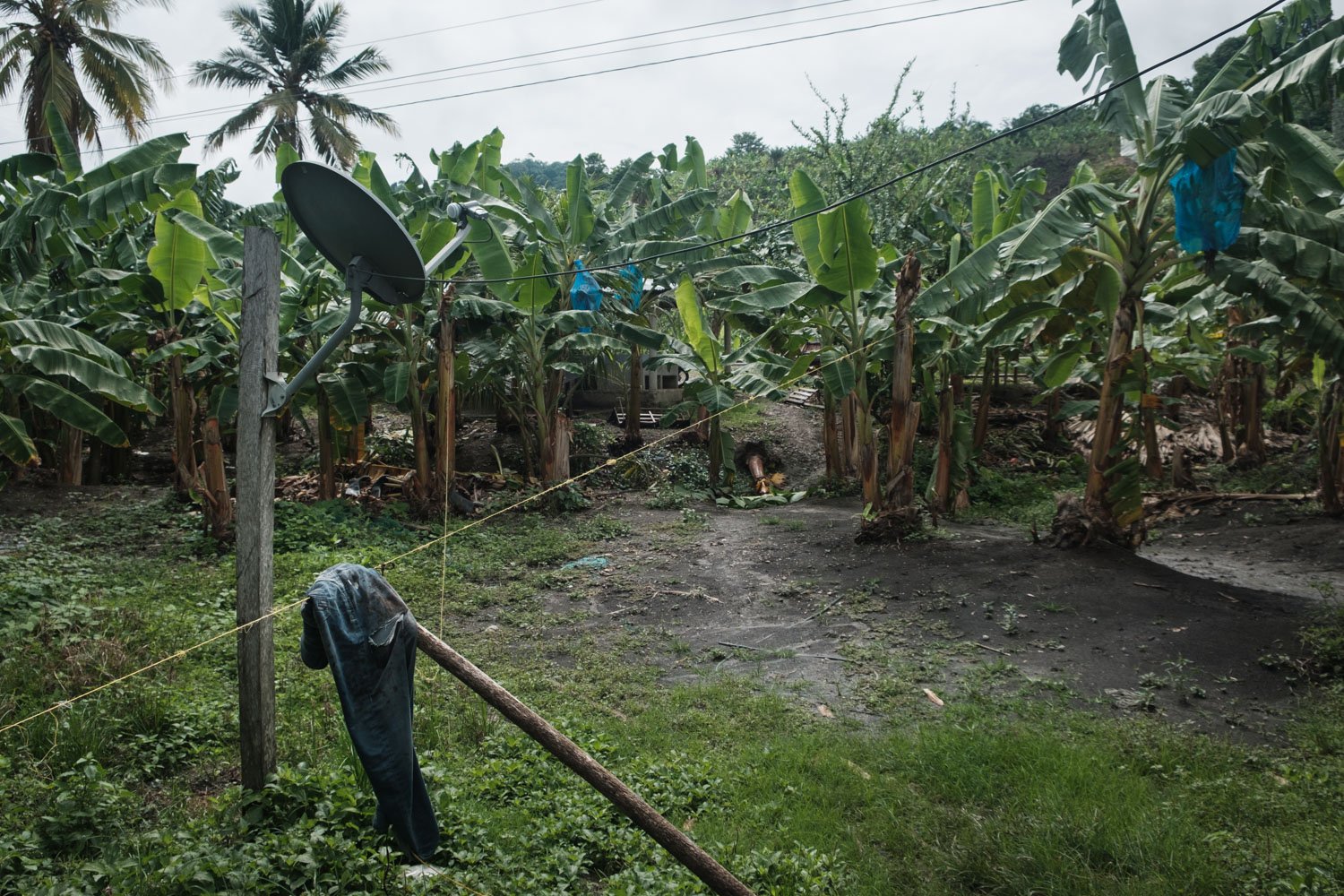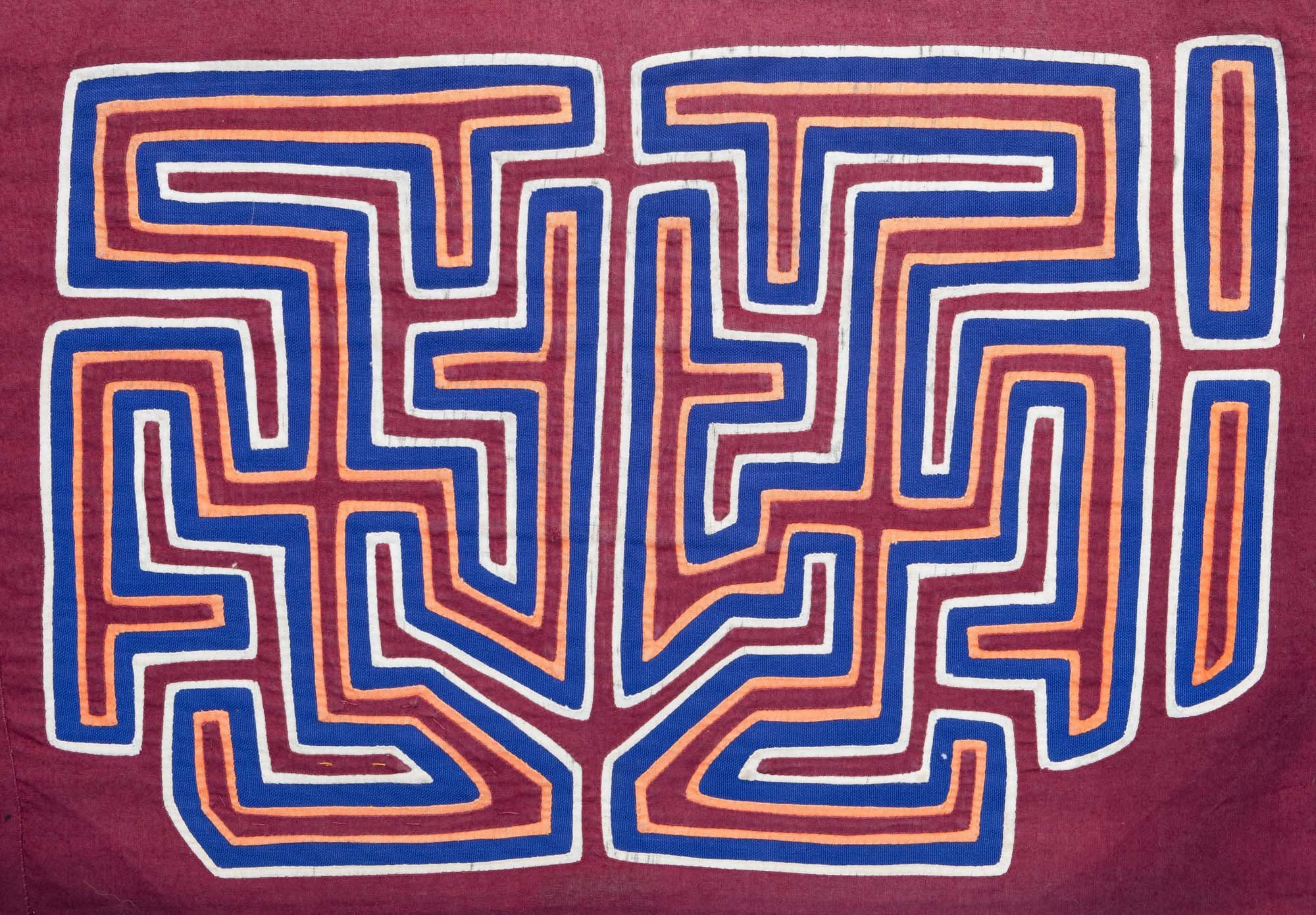
MOLA
Textiles from the Caribbean coast of Colombia
Surrounded by the intense greens of mangroves, palm trees and the Caribbean coast, lies the small town of Necocli in Colombia. This tropical landscape hosts a diverse community that once upon a time was the ancestral territory of the Gunadule.
The Gunadule people are known for Mola designs, an appliqué technique that symbolises a multi-layered universe, dating back to pre- Hispanic motifs. Mola designs are deeply embedded within the culture of the Gunadule. Abstract geometric designs called Nagamolas are textile pieces used for protection, representing natural elements. They express a form of symbolic writing and communication, carrying spiritual messages and imitating the structure of our universe.
Located just a few kilometres away from Necocli, is the settlement of Caiman Nuevo. Our host was Doris, a young mother who has been designing and making molas since the age of 7. A striking and colourful artisan, who produces molas for personal use as well as for trading. Doris described and demonstrated the mola making process and tradition. She explained how molas are made by multiple layers of cloth using several colours to create contrasts and reveal the various shapes.
The colour combinations are chosen for their vibration, contrast and tone variation. As Doris demonstrated, the bottom layer of the textile always stays intact, whereas the top and middle layers are shaped by scissors. The Gunadule consider scissors as a sacred tool that protects them from evil spirits with every snip of the fabric.
“What you see is just a layer of existence, there are various layers that lift up, from north to south, from east to west, in all directions, from one side and from the other like a mirror, and they all complement each other”
The Gunadule believe that the designs and techniques are kept in sacred places, known as galus, that exist in various layers of the universe. According to the Gunadule worldview, only Nageriryai, their spiritual leader could travel across the layers and witness the interacting designs changing like clouds in the skies. Through her spiritual journeys, she learned the writing of molas and with her chants she taught the Gunadule women the mola language.
Mola designs originate from pre-Hispanic stamps traditionally used for body painting. The current mola making technique is an evolution of the practice, transformed into textile pieces using processes introduced during colonial times. The designs clearly reflect the cultural identity of Gunadule and are an integral part of their everyday life.
There are 70000 Gunadule people living on both sides of the border between Colombia and Panama. Around 2000 of them live in Colombia’s Choco and Antioquia provinces. The Gunadule people regard territory as a living thing that possesses gender.
The Gunadule communities of both Panama and Colombia have gone through many difficulties to preserve their culture, language and territories. The area surrounding Caiman Nuevo in the Gulf of Uraba, Colombia, has been suffering from drug trafficking and armed conflict for several years now.
Indigenous communities such as Gunadule are strongly affected by these conflicts. As a direct consequence of a challenging socio-economic situation, traditional craft is being undervalued and artisans exploited. Responsible investment of traditional craft such as the molas, may perhaps encourage the continuation of the practice and support local communities.
Land is considered masculine while water is thought to be feminine, together formulating a harmonious balance in life. Settlements in Colombia occupy very fertile lands, a fact that resulted in its exploitation by the extensive development of plantain monoculture. Most community members work in these plantations and are economically dependent on them.












